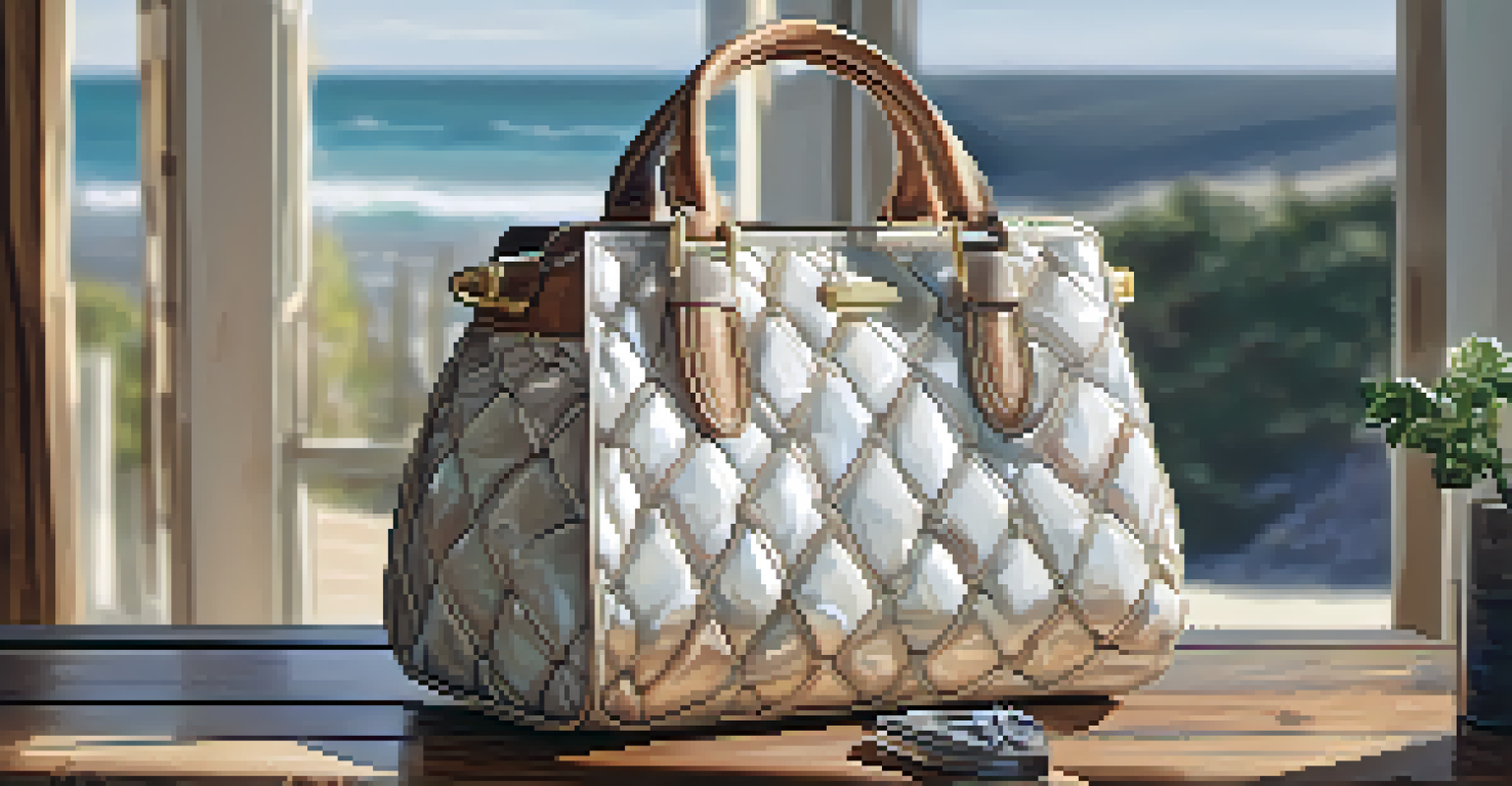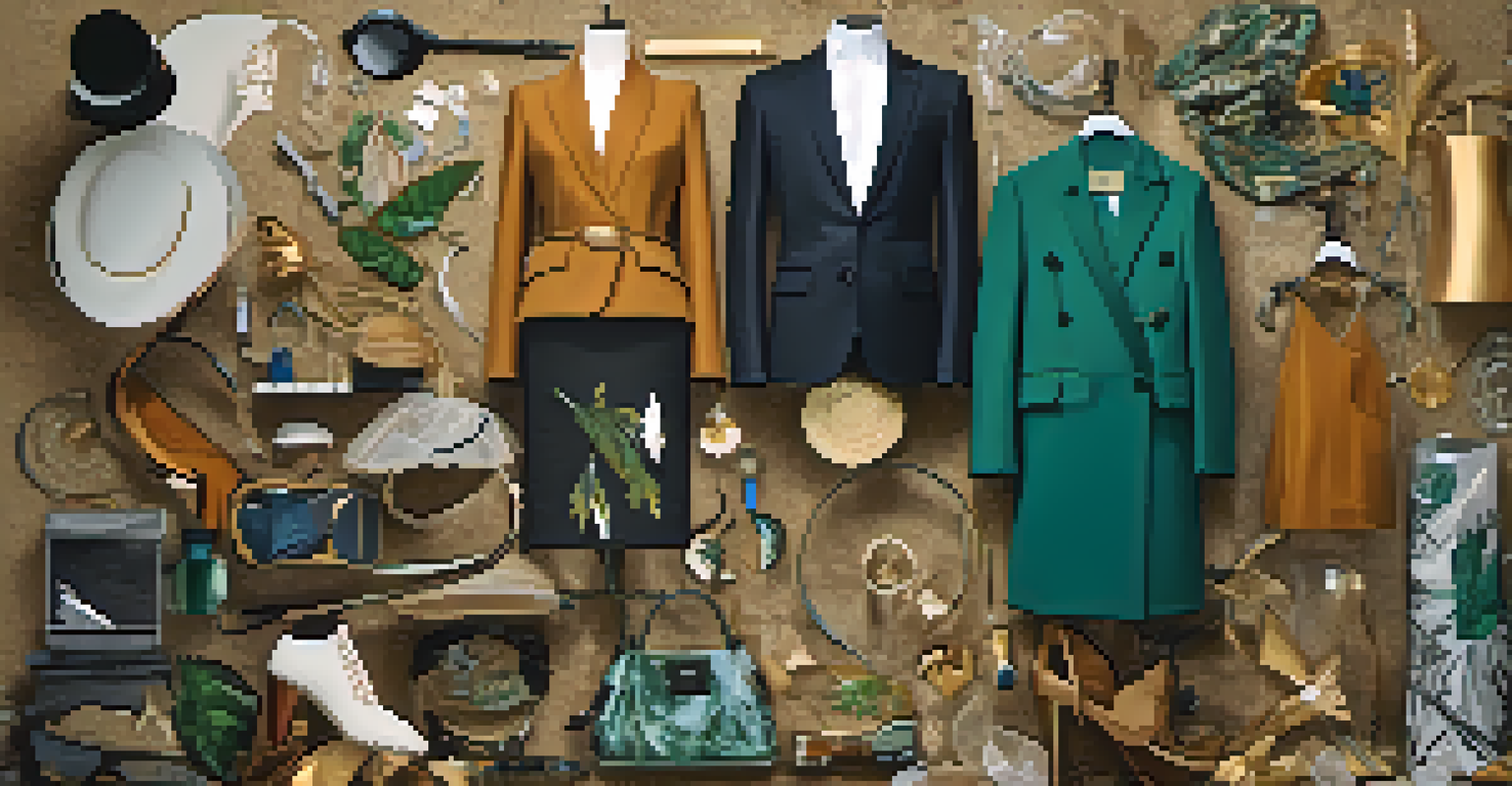The Future of Sustainable Luxury: Innovations to Anticipate

Understanding Sustainable Luxury: A New Paradigm
Sustainable luxury is more than just a trend; it's a transformative approach that redefines how we perceive luxury goods. It combines high-end aesthetics with environmental consciousness, making it a powerful movement in today’s market. As consumers become more aware of their purchasing impact, brands are adapting to meet these elevated expectations.
Sustainability is no longer about doing less harm. It's about doing more good.
Imagine walking into a store that feels as luxurious as it does responsible. This is the essence of sustainable luxury, where craftsmanship meets eco-friendly practices. For instance, brands are now prioritizing materials that are both exquisite and sourced ethically, ensuring that luxury does not come at the expense of our planet.
This shift not only appeals to environmentally-conscious consumers but also sets a new standard for the luxury industry. The future lies in merging elegance with sustainability, creating a harmonious relationship between beauty and responsibility.
Innovative Materials: Redefining Luxury Textiles
The textile industry is undergoing a revolution with the introduction of innovative materials that challenge traditional luxury fabrics. Brands are now experimenting with alternatives like mushroom leather and recycled ocean plastics, which provide a stunning aesthetic while reducing environmental impact. This is akin to finding a diamond in the rough; it’s surprising yet beautiful.

For example, luxury fashion houses are embracing materials such as Tencel, made from sustainably sourced wood pulp. This silk-like fabric not only feels amazing but also minimizes water usage during production. By incorporating these materials, brands can offer consumers high-end products that align with their values.
Sustainable Luxury Redefines Values
Sustainable luxury merges high-end aesthetics with environmental consciousness, appealing to consumers' growing awareness of their purchasing impact.
As these innovations continue to emerge, we can look forward to a future where luxury doesn’t compromise on sustainability. The choice of materials will play a crucial role in shaping the identity of luxury brands, highlighting their commitment to both beauty and the environment.
Circular Economy: Luxury without Waste
The concept of a circular economy is gaining traction in the luxury sector, encouraging brands to rethink their production and consumption models. Instead of a linear approach—create, use, dispose—brands are adopting practices that promote recycling, refurbishing, and reselling. Think of it like a never-ending cycle of elegance and sustainability.
Luxury is the balance of design, in the sense of beauty and highest quality, and sustainability, in the sense of respect for the environment and for the human being.
For instance, some luxury brands are launching initiatives to take back old products and transform them into new ones, thus extending their lifecycle. This practice not only reduces waste but also offers consumers a chance to buy unique pieces that carry a story. Imagine owning a handbag that was reimagined from a vintage design; it adds a layer of charm and history.
As the circular economy becomes more prevalent, luxury brands will need to focus on transparency and accountability in their supply chains. This approach will not only enhance brand loyalty but also empower consumers to make informed choices, further driving the demand for sustainable luxury.
Technological Advancements: The Role of Innovation
Technology is playing a pivotal role in the evolution of sustainable luxury, offering innovative solutions that enhance both production and consumer experience. From 3D printing to blockchain, these advancements are reshaping the luxury landscape. Imagine a world where you can track the origin of your luxury item with just a scan; that’s the power of technology.
3D printing, for instance, allows brands to create products on demand, reducing waste and excess inventory. This technology not only streamlines production but also opens doors for customization, enabling consumers to express their individuality. It’s like having a personal tailor at your fingertips.
Innovative Materials Transform Fashion
The luxury textile industry is embracing innovative materials like mushroom leather and recycled plastics, blending elegance with eco-friendliness.
As we move forward, integrating technology with sustainability will be essential for luxury brands. By embracing these advancements, they can create more efficient processes and provide a richer, more personalized experience for consumers, ultimately setting themselves apart in a competitive market.
Consumer Trends: The Demand for Conscious Choices
Today’s consumers are increasingly seeking products that align with their values, leading to a surge in demand for sustainable luxury. This shift is not just about purchasing a beautiful item; it’s about making a conscious choice that reflects one’s beliefs and lifestyle. Think of it as curating a wardrobe that speaks to your values while still making a statement.
Luxury brands are taking note of this trend, often using storytelling to connect with consumers on an emotional level. By sharing their sustainable practices and the artisans behind their products, they invite customers into their journey—making them feel like part of a larger community. This creates a deeper bond between the brand and the consumer.
As the desire for conscious consumption grows, luxury brands will need to adapt and innovate. The future of luxury will hinge on their ability to resonate with consumers’ values while maintaining the elegance and quality that defines their identity.
Collaborations: Merging Luxury with Sustainability
Collaborations between luxury brands and sustainable innovators are becoming increasingly common, showcasing a commitment to a greener future. These partnerships often lead to creative breakthroughs, combining expertise from different fields. Imagine a renowned fashion house teaming up with an eco-friendly startup to create a limited-edition collection that captivates both heart and mind.
For example, luxury brands are now collaborating with organizations focused on sustainable farming practices to source organic materials responsibly. Such collaborations not only enhance the brand’s sustainability credentials but also tell a compelling story about the journey from farm to fashion.
Circular Economy Promotes Lasting Value
The circular economy encourages luxury brands to adopt recycling and refurbishment practices, extending product lifecycles and reducing waste.
These partnerships highlight the potential for luxury brands to lead by example, inspiring others in the industry to follow suit. As collaborations continue to blossom, they will pave the way for innovative solutions that redefine what luxury means in a sustainable world.
Conclusion: Embracing a Sustainable Future in Luxury
The future of sustainable luxury is bright, filled with innovative ideas and practices that challenge the status quo. As we embrace these changes, we can expect a luxury market that celebrates both elegance and environmental responsibility. It’s akin to planting a seed today for a flourishing garden tomorrow.
Consumers are becoming more vocal about their preferences, driving brands to prioritize sustainability in their offerings. This shift not only benefits the environment but also enriches the luxury experience, making it more meaningful and rewarding. Imagine enjoying a luxurious product while knowing it contributes positively to the world.

In conclusion, the journey towards sustainable luxury is just beginning, and it invites us all to be part of this exciting evolution. By supporting brands that prioritize sustainability, we can help cultivate a future where luxury and responsibility coexist beautifully.